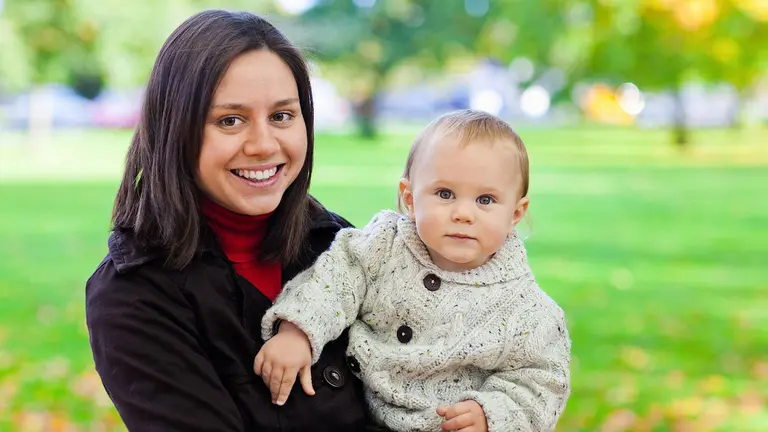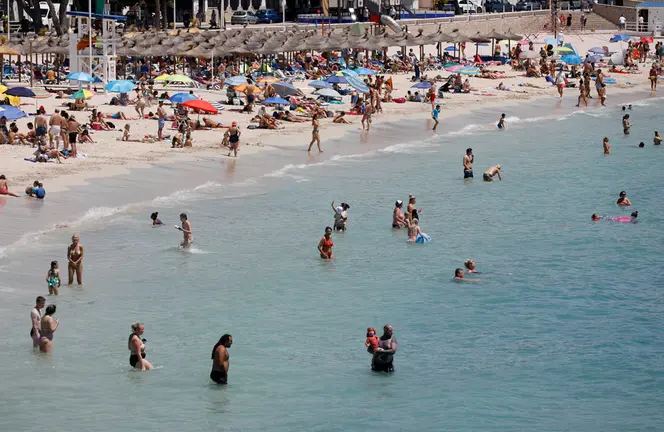Four hours in front of the television. Kids announcing hundreds of prizes with their song that imitates that of the children of the San Ildefonso school. The suspense to see when the biggest prize, dubbed as El Gordo de Navidad, will emerge. This is the Spanish Christmas Lottery draw, a tradition that for some people means the start of the festivities.
The Spanish Christmas Lottery draw dates back from 1812, according to Loterías y Apuestas del Estado, the Spanish lottery operator. It was originally conceived as a Christmas draw, but the current denomination didn’t appear until 1892.
Since the first draw was celebrated on 18 December 1812, the Spanish Christmas Lottery draw has never been cancelled.
Even during the Spanish Civil War (1936-39) it was celebrated. As a curiosity, in 1938 the raffle was carried out in duplicate: there was one in Burgos and another in Barcelona, organized by the Nationalist and Republican side, respectively.
Nowadays it is celebrated on 22 December.
The rules of the draw are very simple: there are two drums, one is filled with balls carrying numbers from 00000 to 99999 and the other one with about 1.800 prizes. That’s why it takes four hours to end. Most of the awards are 1000 euros per ticket (each ticket costs 20 euros), but there are also some special balls:
- 8 balls for the fifth prize: 6.000 euros per ticket.
- 2 for the fourth: 20.000 euros per ticket.
- 1 for the third: 50.000 euros per ticket.
- 1 for the second: 125.000 euros per ticket.
- 1 for the first or El Gordo de Navidad: 400.000 euros per ticket.
Where is it celebrated?
The Spanish Christmas Lottery is held in the Royal Theatre (Teatro Real) in Madrid. It is very difficult to catch a free seat in the theatre to watch the draw and people who want to experience it live often have to queue for hours. No matter what you do or how early you get up, there is no guarantee that you can follow the event from within.
Inside the theatre, there is a group of kids anxious to sing El Gordo. They are from San Ildefonso school and they spend a lot of time with the preparations for their most special day. San Ildefonso used to be a boys’ school, so there were no girls singing the Christmas lottery prizes until 1984, when the school became coeducational.
The full event has been broadcasted on television every year since 1957. Not everybody has the chance or the patience to watch it from the start until the end, but a big part of the population is somehow anxious to see El Gordo appear. In 2004, it was at 9:15 when it happened, only 13 minutes after the start, but usually it takes much longer.
The tradition
The tradition of the Christmas lottery is reflected in many ways in Spanish society. It is typical for families and friends to share a ticket or to buy many for different persons. It is common for lottery tickets to be sold in the workplace and also for colleagues - whether they are offices or factories - to play the same number.
The idea is that if fortune brings joy, let it be for all the group members.
In addition to this, some organizations sell tickets with a lower value. If one regular ticket costs 20 euros, those can be divided into smaller shares priced at 2-5 euros. A part of the cost includes a donation to an association or charity. Of course, the potential prize is also proportionally smaller, but these small shares allow people who are short on money to bet on multiple numbers and widen their chances of winning.
How much do Spaniards spend
According to the statistics, each person bets on almost three tickets of the Christmas lottery.
In 2020, the average amount of money spent per inhabitant was 54.92 euros. The province that spent the most was Soria (Castilla y León) with 198.13 euros per person, while Melilla (autonomous city in North Africa) was the area that spent the least, 14.57 euros per person.
Most wanted numbers
There are more traditions related with the most bought numbers. Those ending in 13 sell faster even when superstition tells us it's an unfortunate number.
Also those that represent special dates tend to be sold very soon. For example this year a very searched number is the date when La Palma’s volcano erupted (19921), but in 2020 it was popular the date when the state of alarm started due to the coronavirus pandemic (14320).
Every year there are newly married couples that bet on the number that reflects the date of their wedding, or families that play with the date of birth of a child, a grandchild or a nephew, for example.
Famous lottery venues
To continue the topic of superstition, there are large queues in some famous lottery shops where El Gordo has been sold many times. This happens specially when the day of the draw is nearer. A well-known example is Doña Manolita in Madrid, but there are other very popular places around Spain.
In Sort, a small town in Lleida (Cataluña), there is an administration called La Bruixa d’Or (The Golden Witch) that has sold El Gordo four times since 2003, two of them consecutive. Nowadays, 87% of their revenue related with the Christmas lottery comes from online purchases made by people throughout Spain.
But what if you don’t get any big prize? No problem, because after the draw starts what Spaniards call the 'day of the Health.' It is a way of being humorous about not having won the prize draw, in which everybody but the lucky winners says “at least I'm healthy”.
*Pablo Morilla is a journalist, author of the blog Michan en Finlandia.












